The Lofoten Islands
To be honest, Julie and I didn’t know too much about the cod liver oil industry. I mean, unless you are a cod fisherman, who does? But we were smack dab in the middle of Europe’s largest cod fishing area and surrounded by cod drying in the warm Norwegian sunshine. The Lofoten Islands are a string of interconnected islands shooting off the coast of northern Norway north of the Arctic Circle, a cold and quiet place by winter but a bopping fishing and tourism centre by summer. And there we were, learning all about cod.
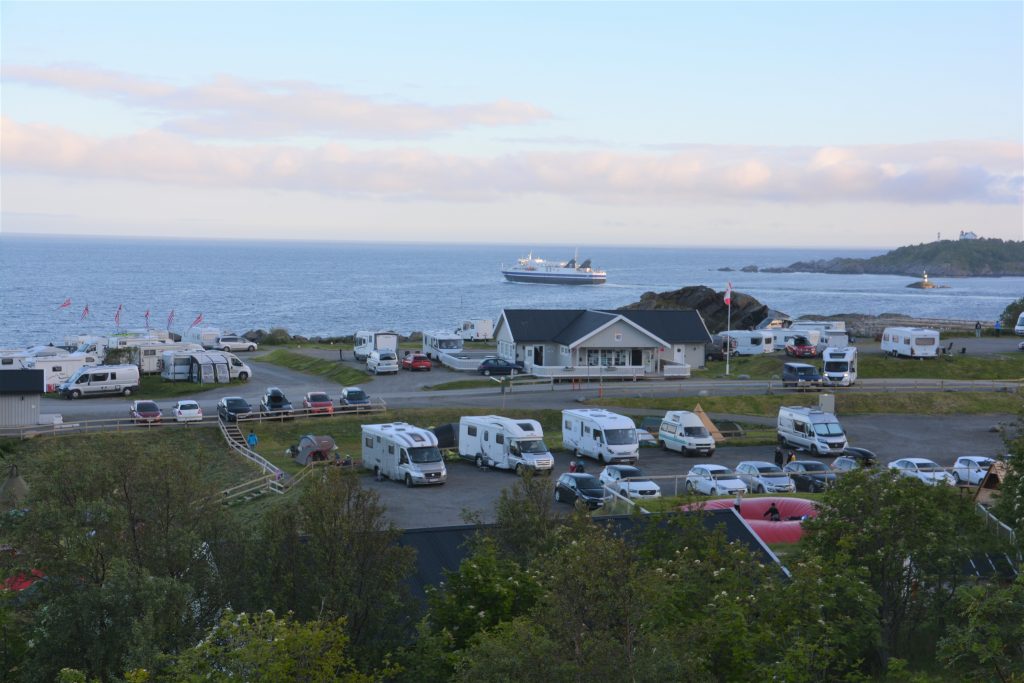
The view from our campsite the first night in the Lofoten Islands – see our ferry heading back to the mainland and all the European-sized RV’s in camp
We had caught the ferry from the town of Bodo on the mainland to the small port town of Moskenes and the next day made the short drive down to the end of the road on the last island at a town called A. That’s it, just the letter A. The Norwegians get fancy and put a little circle like a halo above the A but basically this town only has one letter. So immediately we thought it was cool. Like most communities on the islands, its origins are all about fishing and they’ve retained a number of historic buildings dating back to the late 18th century. The mountains which tower over the town still showing patches of snow and create a dramatic backdrop to this picturesque little town.
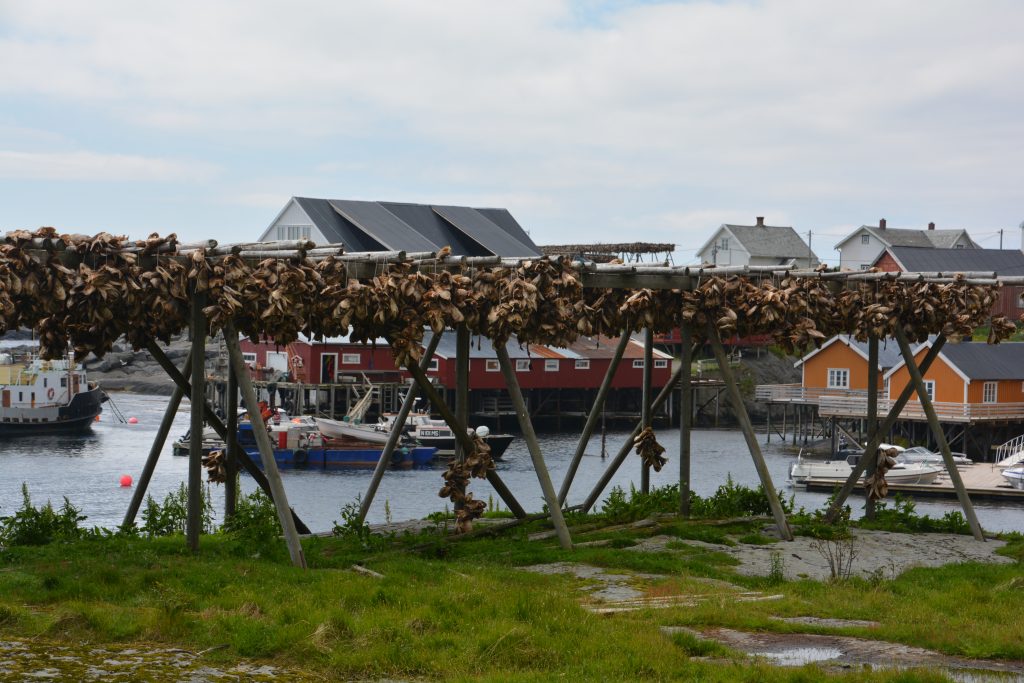
Cod heads out to dry in the sun – they are dried after the rest of the fish is dried and packed away
We then turned around and headed north through a series of small communities and fishing villages that still retain much of the original buildings, architecture, culture and lifestyle of years past. Today tourism is the economic driver, maybe even above fishing, and as strong evidence, the only road was packed with European mini-RV’s and hire cars from visitors arriving from all over Europe. And of course then there was Tramp with his California license plate and Australian flag window stickers, drawing a crowd here as everywhere.
The history of the Lofoten Islands, and to some extent Norway, is about fishing and in particular the fishing of cod. Without the swarms of cod coming down from the Arctic waters every January to April this fabulous coastline wouldn’t have had any settlers, including the mighty Vikings who relied on cod for their food and for trade with other lands. Dried and salted cod was the daily diet for people to survive through the harsh winters and it was one of the country’s main exports until the discovery of oil. The fishing industry is still a major part of the culture and economy of Norway.
But as cool as the fishing villages were, and as unique as it was to see thousands of cod (or cod heads!) drying in the sun, the real star of the Lofoten Islands was the mountains, huge vertical granite creatures casting shadows and attitude over all else. The town of Reine was a particular example – picturesquely set with its red and white painted houses at the end of the Kjerkfjorden Fjord, its jagged skyline and sheer walls acting as a magnet for all passing eyes.
We drove further north, making slow progress as we stopped at the huge wooden racks drying cod in the sunlight, then coming across a spectacular long sandy beach that would have been more expected in California or Australia, then heading up another glacier-carved valley for a historic fishing village like no other. It was slow going and we gave the camera a serious workout.
Our total progress for the day was only about 50 kilometres and we camped the night overlooking the ocean, the gentle lapping waves only metres below us, with sawtooth mountains behind us and in front of us. Norway continued to deliver the goods and we thought to heck with Norwegian fjords, they are so yesterday, now it’s all about the Norwegian islands.
The main road of the island weaves its way past the waterways, around the mountains (or sometimes right through them!) and connecting the little fishing villages that dot the beautiful landscape. We continued north and stopped at one of the highlights of the islands, the Viking Museum. This museum compliments the other Viking museum in Oslo in that it has a reconstructed long house that was dug up here 35 years ago and provides activities for families such as sailing on a Viking ship, Viking meals, riding horses, using Viking bows and arrows and, yes, axe throwing.
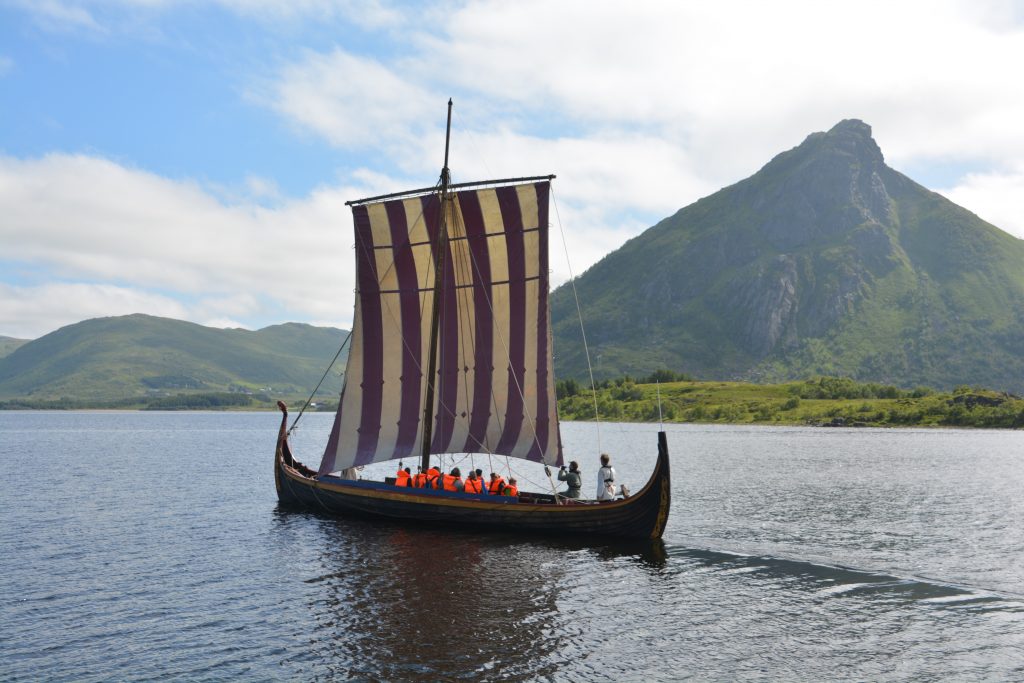
It was great to see a Viking ship sail past us, even if their passengers all wore bright orange lifejackets
Julie and I walked through the long house where the Vikings would all live – especially in winter – and then walked down to the nearby lake to try our hand at archery, axe throwing and watch a Viking ship sail away, all very cool.
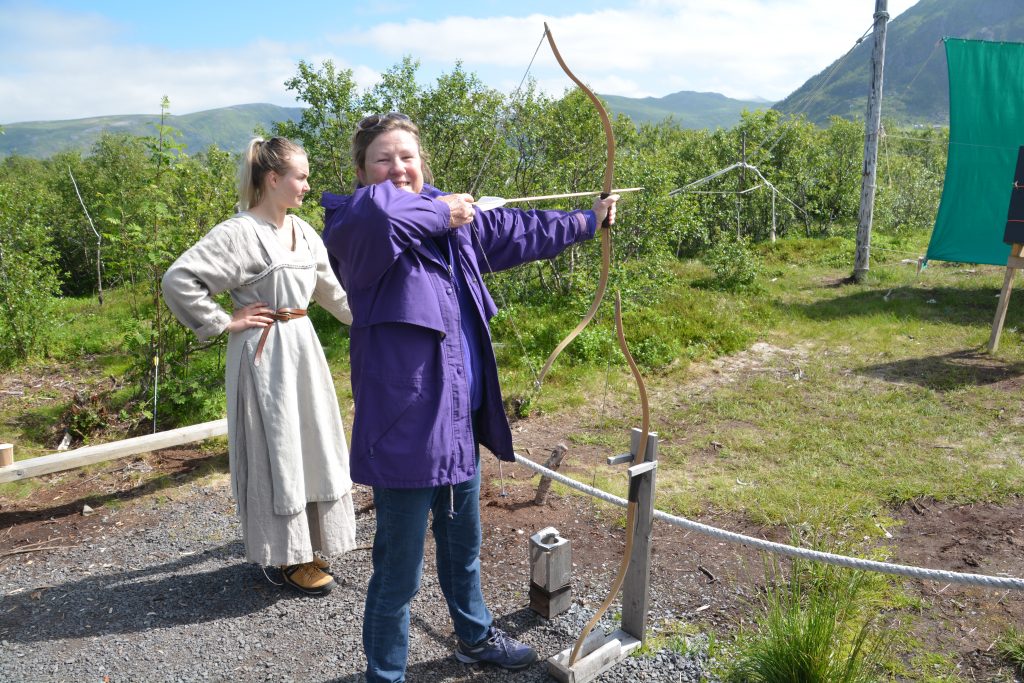
As it turns out, Julie has a little repressed Viking in her too and she had a few bullseyes to prove it
We continued northward along this dramatic landscape, island hopping across amazing bridges, marvelling at the idyllic summer scenes. We stopped in the little fishing village of Hemmingsvaer, the small historic town of Kabelvag and the island group’s largest town of Svolvaer (population 4,500!). We camped that night on the banks of a little offshoot of the Austensfjordrn Fjord, a warm sun till past our bedtime, a million bugs attacking us, the mountain scenery soothing us.
The main road through the islands followed a more northerly route but offered us a beautiful side road down to the small community of Digermulen on the banks of another fjord with snow-patched mountains all around. After many more dramatic fjords and huge bridges spanning the islands we found ourselves back on the mainland and eventually to the delightful town of Bjerkvik, nestled comfortably at the end of the Ofotifjordan fjord.
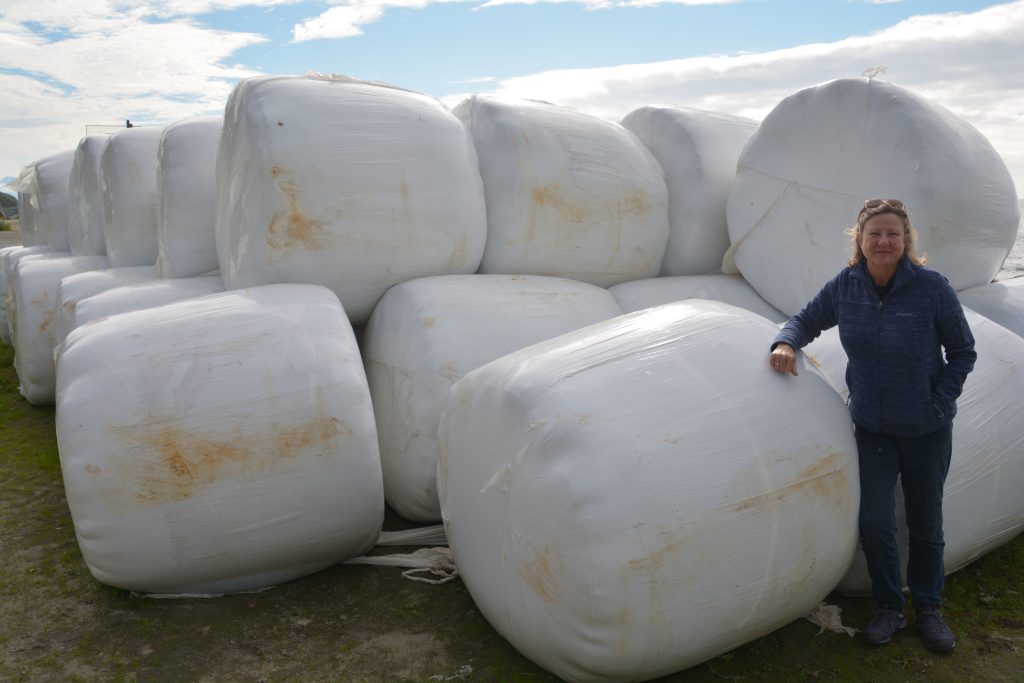
The islands even had a little bit of agriculture – here is Julie hanging out with giant marsh mallows masquerading as rolls of hay
It was in Bjerkvik that we solved our largest ongoing problem with our camper. Since mid-April – about three months ago – when we were in central Chile the hydraulic motor on our camper stopped working. Tests seemed to indicate the motor was completely stuffed and we were forced to use a 12V drill to manually lift and lower the camper roof, an emergency short term fall-back solution.
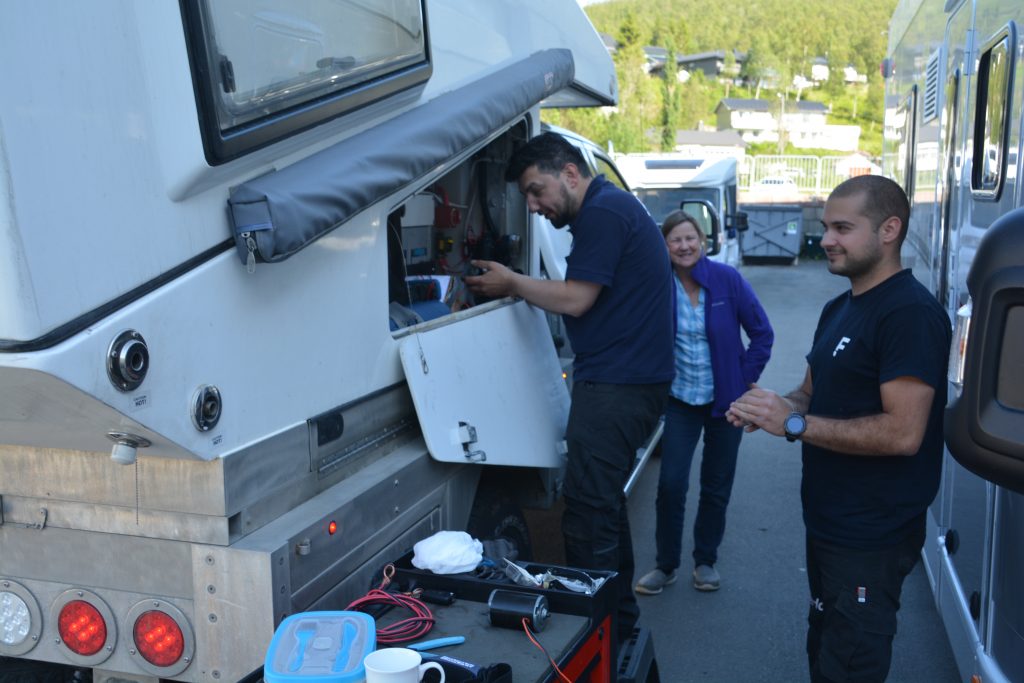
These guys came to our rescue and performed the delicate operation of swapping the old broken hydraulic pump for the shiny new one. Thanks guys!!!
XP Camper provided a replacement motor while we were briefly in California but their support dried up after that so our next task was to find someone locally who could swap out the new for the old. And that someone was the good people at Ferda Caravans in beautiful Bjerkvik who took on the task despite it being after-hours and way out of their normal duties. It wasn’t an easy job given the awkward location of the motor but they eventually swapped out the motor and then asked us to pose for photos in front of our Aussie flag on Tramp. So if you’re ever in the neighbourhood and need work done on your camper or caravan we would recommend you call into Ferda Caravans in Bjerkvik. Tell them Bill sent you.
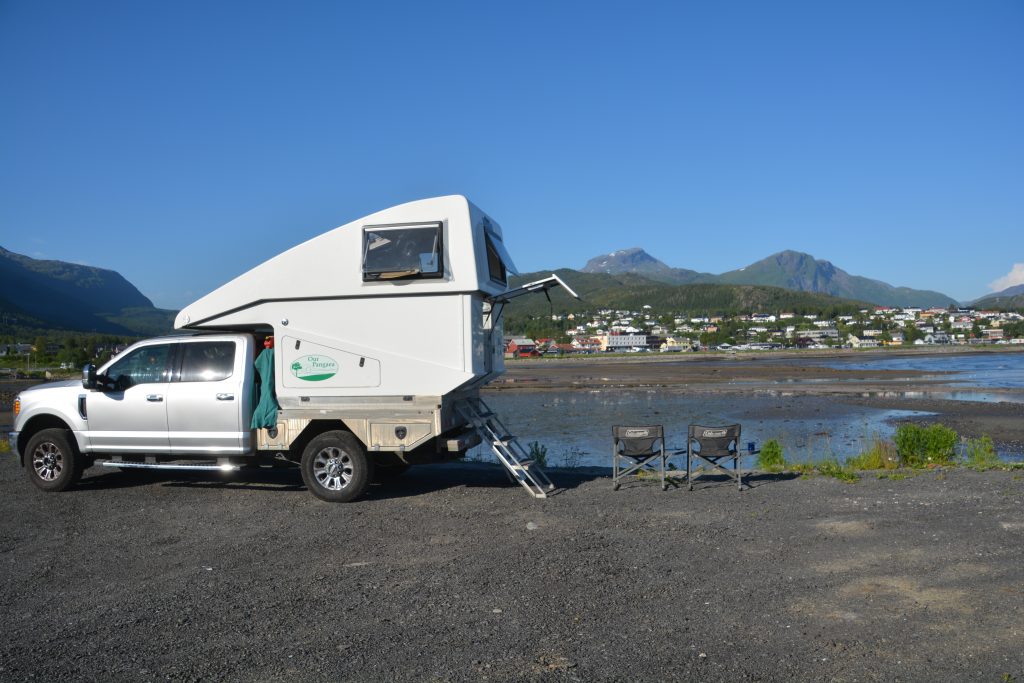
Our camp overlooking the small harbour of Bjerkvik – a great end to a beaut day and a fixed hydraulic motor to boot!
Our time in the Lofoten Islands had sadly ended but not before we saw another spectacular side of Norway, learned more about their unique culture and met another gaggle of fabulously friendly and helpful people. But we still had a long way to go to the northernmost point of the country so we had to keep moving in that general direction.
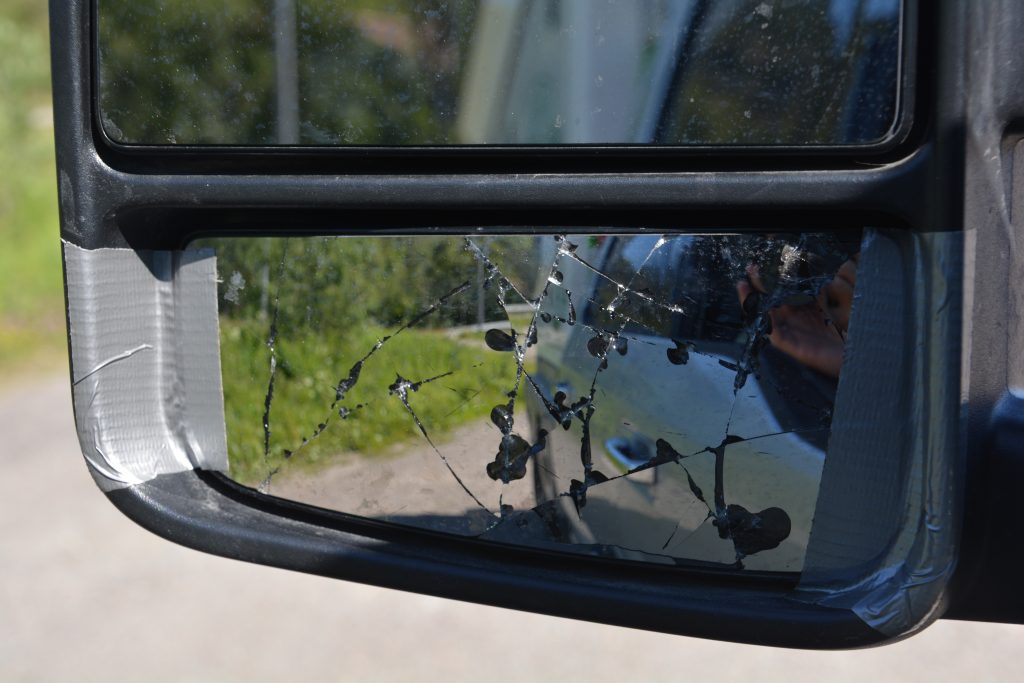
Well, our time on the Lofoten Islands was not perfect. After meeting thousands of vehicles on the narrows roads of three continents it finally happened. Tramp’s side view mirror clipped the mirror of an ongoing vehicle, flipped out of its casing and landed on the road. I picked it up and duck taped it back into its casing – almost as good as new!


















These recent blogs have been some of the hardest to read. I need to get there ASAP.
Also, great archery form Mum!
Thanks Zach. Mum wanted to try the archery in your honour!